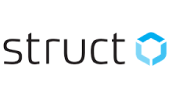What is a customer portal?
A customer portal serves as a gateway to all your services and data, including your offerings, relevant information and customer support. In B2B, manufacturers, distributors and resellers use customer portals to make it easier for customers, partners and employees to place orders and find information packaged for their needs. A customer portal may also be called a partner portal, vendor portal or procurement portal depending on which of these users you cater to most.
With system integrations and a number of capabilities, a customer portal plays a key role in obtaining a 360-degree view of your customers. This combined with self-service, personalization and more empowers you to deliver a strong customer experience. To be considered world-class, a customer portal should be tailored to specific needs, future-proof, and customer-centric. This improves CLTV, increases productivity, and provides key competitive advantages.
Scroll down to learn more about how a customer portal can boost Customer Experience (CX), how to build a world-class customer portal, why to invest in a customer portal, and how to make your customer portal project a success with best practices.
How a customer portal helps deliver a strong CX
In today's competitive business environment, there are very few aspects that differentiate you from your competitors. This is why the overall Customer Experience (CX) is now a higher priority and greater differentiator than the transaction itself. In the B2B sector, it is more about the relationship you can build with your customer through various digital touchpoints that matters the most.
Obtaining a 360-degree view of your customers is essential for delivering a consistent and compelling CX throughout every stage of the buyer’s journey. This means combining both historical and real-time data across departments to understand customer behavior at each step of their journey.
Because the entire customer journey has moved online, a well-integrated customer portal empowers you to deliver a better CX by making it easier for customers to find everything they need – from relevant product information to customer-specific pricing and self-service order management enabled and personalized by your customer data.
Why invest in a customer portal?
More and more B2B companies see the advantages of a customer portal, mainly to personalize the buying experience and to consolidate digital services and product information for customers. If you haven’t invested in a customer portal yet, you could lose business in an increasingly competitive environment because one of the following three pitfalls:
1. You’re not available to take an order at exactly the time when the customer wants to buy.
2. The customer hesitates to place an order due to uncertainty about availability, price and delivery time frame.
3. The customer is discouraged from ordering by geographical limitations or specific business hours.
Fact: A customer portal eliminates all of these pitfalls by empowering customers to order anytime anywhere whenever they want while easily finding relevant availability, pricing, delivery times and other information. This is an example from an order perspective, but the same applies to service, support, information, training and many other capability areas.
By investing in a customer portal and improving CX, you can benefit from:
Improved CLTV
A customer portal enables you to intuitively offer more avenues for self-service, leverage all channels, personalize customer communications and deliver targeted content. All of this helps you reduce churn rates and increase your customer lifetime value (CLTV).
Freed up time for sales and support
Customers are more likely to choose self-service when effective tools to find answers to their questions are available. This reduces support cases, saving your staff valuable time that instead can be spent on value-added activities.
Competitive edge
A customer portal allows you to present all kinds of information, from size tables to informative guides, in a structured manner. Customers who can find everything they’re looking for in your customer portal will be less likely to wind up in competitors’ channels and more likely to find you when searching for information.
Optimize your customer portal
ON-DEMAND WEBINAR SERIES
Still wondering how you can bring more customer centricity in your business? Are you experiencing difficulties creating a great digital buying experience for your customers and sales teams?
What your business needs is a customer portal at the core of your digital commerce strategy to build your brand and enhance customer satisfaction.. In this 2-part webinar series, we dive into what you should focus on the journey to implementing a modern customer portal for your business.
ON-DEMAND WEBINAR SERIES
What it takes to build a customer portal
Now that you know why you need a customer portal, you may be wondering how to create one that will maximize revenue, outshine the competition and deliver all the benefits you’ve read about above. We call a customer portal that does all of this world-class, and here are three criteria for a world-class customer portal:
Tailored to specific demands and challenges
Your customer portal must take into account the different needs of all types of users, including both internal and external users. This can be done by tailoring the interface, information and other aspects to the role of the user, identified by logging in.
Future-proof
A future-proof customer portal is capable of handling system integrations and adaptations over time to meet both current and future needs. This requires solving complex business logic combining several business processes and functions. It is easier to integrate best-of-breed solutions into your customer portal with a headless modern e-commerce architecture.
Customer-centric
A customer-centric approach means putting the customer first, empowering them to get things done faster, easier, anytime and anywhere. Putting aside all the buzzwords, this boils down to simply making their lives easier.
Based on our model below, let’s take a look at what your customers want, from their perspective, and what you can do to make life easier for them:
-1.png?width=700&height=528&name=Customer%20Portal%20(Illustration)-1.png)
"Empower me"
Examples of actions you can take:
![]() Deploy B2B self-service along the customer journey
Deploy B2B self-service along the customer journey
![]() Set up a chatbot that can answer common questions 24/7
Set up a chatbot that can answer common questions 24/7
![]() Make your customer portal mobile-friendly and device-agnostic
Make your customer portal mobile-friendly and device-agnostic
"Don't make me think"
Examples of actions you can take:
![]() Simplify the checkout process with as few steps as possible
Simplify the checkout process with as few steps as possible
![]() Provide support for reordering items and recurring orders
Provide support for reordering items and recurring orders
![]() Provide personalized parts lists and services for registered machinery
Provide personalized parts lists and services for registered machinery
"Increase my efficiency"
Examples of actions you can take:
![]() Connect information about customer’s products, usage, persona and behavior to obtain a 360-degree view
Connect information about customer’s products, usage, persona and behavior to obtain a 360-degree view
![]() Communicate with relevance, speed and consistency across all touchpoints and channels
Communicate with relevance, speed and consistency across all touchpoints and channels
![]() Personalize recommendations, pricing and product information
Personalize recommendations, pricing and product information
"Guide and inspire me"
Examples of actions you can take:
![]() Create technical information and inspiring guides tailored to customer needs
Create technical information and inspiring guides tailored to customer needs
![]() Make the most relevant information for a given customer easy to find
Make the most relevant information for a given customer easy to find
![]() Recommend content for further reading based on behavioral triggers
Recommend content for further reading based on behavioral triggers
Best practices from real-world experience
We live and breathe customer portals and have worked on many major portal projects, in the past years for our customers. Three key learnings were identified that can really make or break a customer portal project. Use these as best practices and get inspiration to make your customer portal project as smooth and successful as possible:
Organizational alignment
It's essential to have a clear objective for why you are building a customer portal and to make sure that top management is aligned around it. This will ensure that your efforts are focused on the right goals and that everyone is on the same page.
Data quality and availability
It's not uncommon to encounter poor quality data that needs to be cleansed or enriched, or to find that data is unavailable due to silos in your technical setup and organization. This can make it difficult to create a unified and streamlined experience for customers. To overcome this, it's important to have a holistic view of the customer and to work on breaking down silos in your organization.
System agility
Traditional IT-based waterfall process models may not work as well in a fast-paced and constantly changing environment. One way to address this is by separating the presentation layer (the "head") from the back end and building a composable solution that allows for experimentation and design changes without being held back by long release cycles. Additionally, utilizing the power of cloud technology and building API-first, headless services can help drive competitive advantages.
Related blog posts
How TMHE improved customer service and experience through their e-commerce strategy
Learn more











